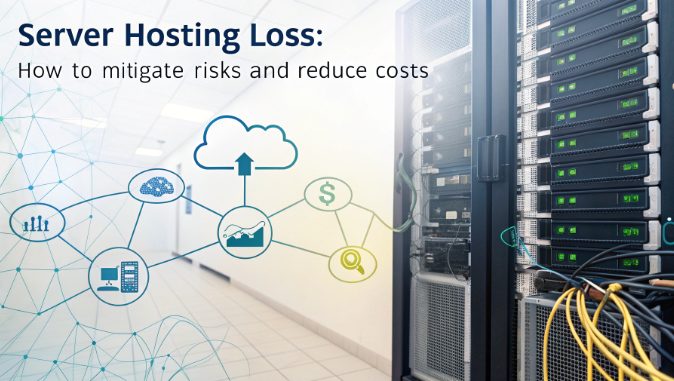Server Hosting Loss: How to Mitigate Risks and Reduce Costs

In the ever-evolving landscape of server hosting and infrastructure management, tech teams face mounting challenges in balancing performance requirements with cost constraints. This comprehensive guide explores advanced strategies for risk mitigation and cost optimization in server hosting environments, with a special focus on Hong Kong’s data center ecosystem. As organizations increasingly rely on digital infrastructure, the stakes for maintaining reliable, secure, and cost-effective hosting solutions have never been higher.
Understanding the Risk Landscape
Server hosting environments face multiple threat vectors that can impact operational stability and cost efficiency. These challenges require a systematic approach to risk assessment and mitigation. Modern hosting environments must contend with sophisticated cyber threats, unpredictable workload patterns, and evolving compliance requirements, all while maintaining optimal performance and cost efficiency.
- Infrastructure vulnerabilities, including hardware failures and system obsolescence
- Network security breaches, ranging from DDoS attacks to data exfiltration attempts
- Performance bottlenecks caused by resource contention and poor capacity planning
- Resource allocation inefficiencies leading to unnecessary operational costs
- Compliance violations that could result in substantial penalties and reputational damage
Technical Risk Analysis
When evaluating hosting solutions, engineers must consider several technical parameters that directly influence risk exposure. Each parameter requires careful analysis and continuous monitoring to maintain optimal system performance and reliability. Understanding these metrics enables organizations to make data-driven decisions about their infrastructure investments.
- Hardware failure probability metrics, including MTBF analysis and component lifecycle assessment
- Network redundancy configurations with emphasis on geographical distribution and failover capabilities
- Power distribution architecture, including UPS systems and generator backup specifications
- Cooling system efficiency measurements and thermal management strategies
- Bandwidth utilization patterns and traffic analysis for capacity planning
Hong Kong-Specific Considerations
Hong Kong’s unique position as a tech hub presents specific advantages and challenges for server hosting operations. The city’s sophisticated infrastructure and strategic location make it an ideal choice for organizations seeking reliable APAC presence, while also presenting unique considerations for risk management and compliance.
- Strategic location for APAC network connectivity, offering sub-20ms latency to major Asian markets
- Advanced infrastructure capabilities, including tier-4 data centers and high-speed fiber networks
- Regulatory compliance requirements under PDPO and cross-border data transfer regulations
- Natural disaster resilience measures, incorporating typhoon and flooding protection protocols
Cost Optimization Strategies
Implementing effective cost management requires a multi-faceted approach that combines technical innovation with operational excellence. Modern hosting environments must leverage automation and intelligent resource management to maximize cost efficiency without compromising performance or reliability.
- Resource scaling automation
- Load-based scaling triggers using advanced metrics and machine learning algorithms
- Predictive capacity planning based on historical usage patterns and growth projections
- Automated resource deallocation for unused or underutilized systems
- Infrastructure optimization
- Containerization adoption with orchestration platforms like Kubernetes
- Microservices architecture implementation for improved resource utilization
- Server consolidation through virtualization and workload analysis
Technical Risk Mitigation
Advanced risk mitigation strategies should incorporate modern technologies and best practices to ensure robust system protection. These strategies must evolve continuously to address emerging threats and changing business requirements.
- Distributed backup systems with multi-region redundancy and instant recovery capabilities
- Real-time monitoring tools utilizing AI-powered anomaly detection
- Automated failover mechanisms with zero-downtime migration capabilities
- Security hardening protocols including zero-trust architecture implementation
Implementation Best Practices
Success in server hosting risk management depends on following established best practices that have been proven effective across various scenarios and environments. Regular review and updates of these practices ensure continued effectiveness.
- Continuous monitoring implementation with comprehensive metrics and alerting systems
- Regular security audits incorporating penetration testing and vulnerability assessments
- Performance benchmarking against industry standards and competitor analyses
- Disaster recovery testing with simulated failure scenarios and recovery time objectives
- Capacity planning reviews incorporating business growth projections and technology trends
Technical Case Analysis
Consider the following real-world implementation scenario that demonstrates the practical application of these strategies:
A fintech company operating in Hong Kong achieved 40% cost reduction while improving system reliability through:
- Implementing auto-scaling architecture with custom metrics-based triggers
- Optimizing database configurations through query analysis and indexing strategies
- Adopting containerized deployments with orchestrated microservices
- Utilizing advanced load balancing algorithms with session persistence
Future-Proofing Strategies
Stay ahead of evolving hosting challenges by incorporating emerging technologies and innovative approaches to infrastructure management:
- Embracing edge computing solutions for reduced latency and improved user experience
- Implementing AI-driven optimization for predictive maintenance and resource allocation
- Adopting green computing practices to reduce energy consumption and operational costs
- Leveraging hybrid infrastructure models combining traditional and cloud-native solutions
In conclusion, successful server hosting risk management requires a balanced approach combining technical expertise, strategic planning, and continuous optimization. By implementing these strategies within Hong Kong’s advanced infrastructure ecosystem, organizations can achieve both enhanced security and cost efficiency in their hosting operations. The key to success lies in maintaining flexibility while adhering to best practices and leveraging emerging technologies to stay competitive in an increasingly digital world.

